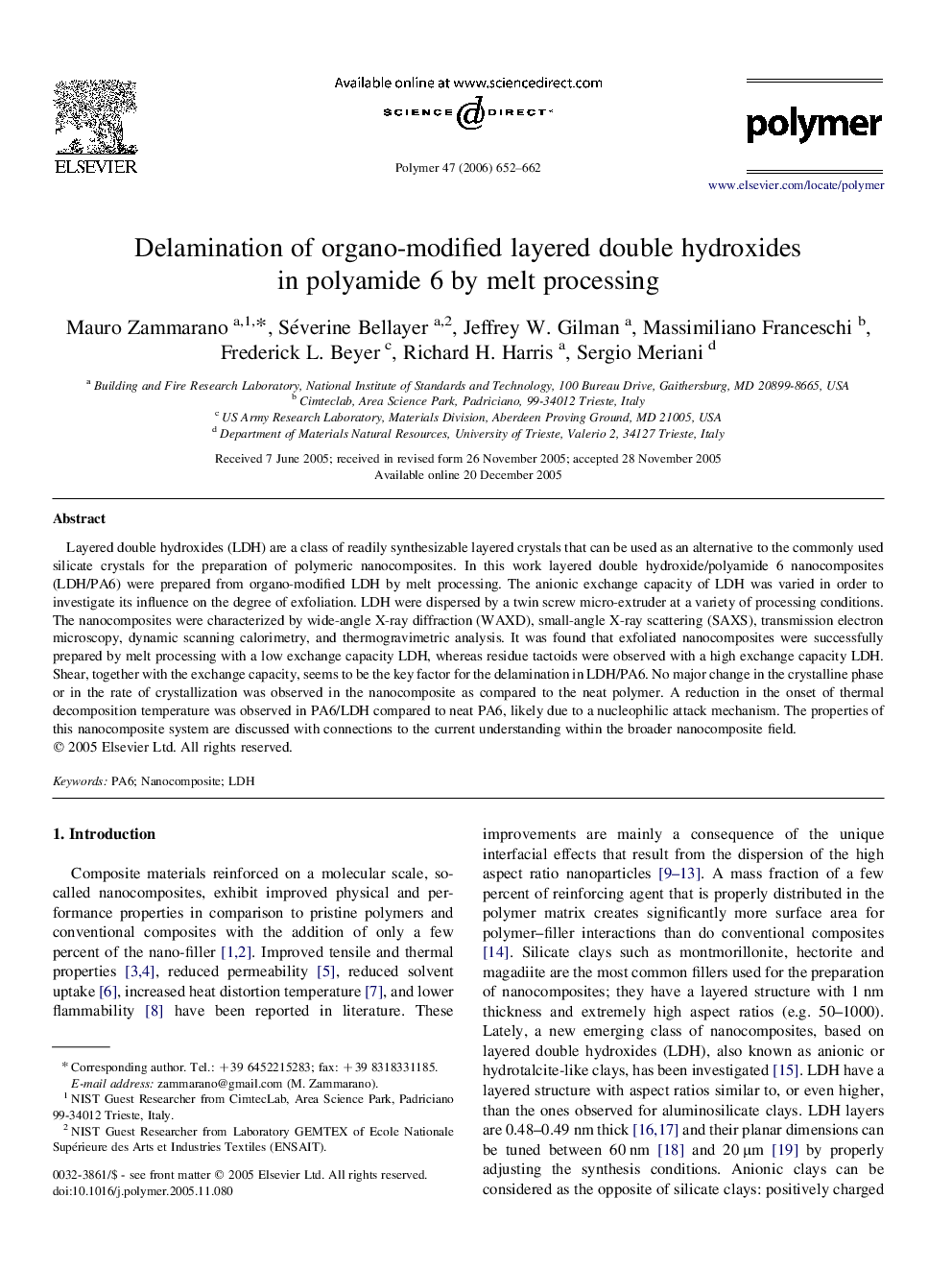| Article ID | Journal | Published Year | Pages | File Type |
|---|---|---|---|---|
| 5189416 | Polymer | 2006 | 11 Pages |
Abstract
Layered double hydroxides (LDH) are a class of readily synthesizable layered crystals that can be used as an alternative to the commonly used silicate crystals for the preparation of polymeric nanocomposites. In this work layered double hydroxide/polyamide 6 nanocomposites (LDH/PA6) were prepared from organo-modified LDH by melt processing. The anionic exchange capacity of LDH was varied in order to investigate its influence on the degree of exfoliation. LDH were dispersed by a twin screw micro-extruder at a variety of processing conditions. The nanocomposites were characterized by wide-angle X-ray diffraction (WAXD), small-angle X-ray scattering (SAXS), transmission electron microscopy, dynamic scanning calorimetry, and thermogravimetric analysis. It was found that exfoliated nanocomposites were successfully prepared by melt processing with a low exchange capacity LDH, whereas residue tactoids were observed with a high exchange capacity LDH. Shear, together with the exchange capacity, seems to be the key factor for the delamination in LDH/PA6. No major change in the crystalline phase or in the rate of crystallization was observed in the nanocomposite as compared to the neat polymer. A reduction in the onset of thermal decomposition temperature was observed in PA6/LDH compared to neat PA6, likely due to a nucleophilic attack mechanism. The properties of this nanocomposite system are discussed with connections to the current understanding within the broader nanocomposite field.
Keywords
Related Topics
Physical Sciences and Engineering
Chemistry
Organic Chemistry
Authors
Mauro Zammarano, Séverine Bellayer, Jeffrey W. Gilman, Massimiliano Franceschi, Frederick L. Beyer, Richard H. Harris, Sergio Meriani,
